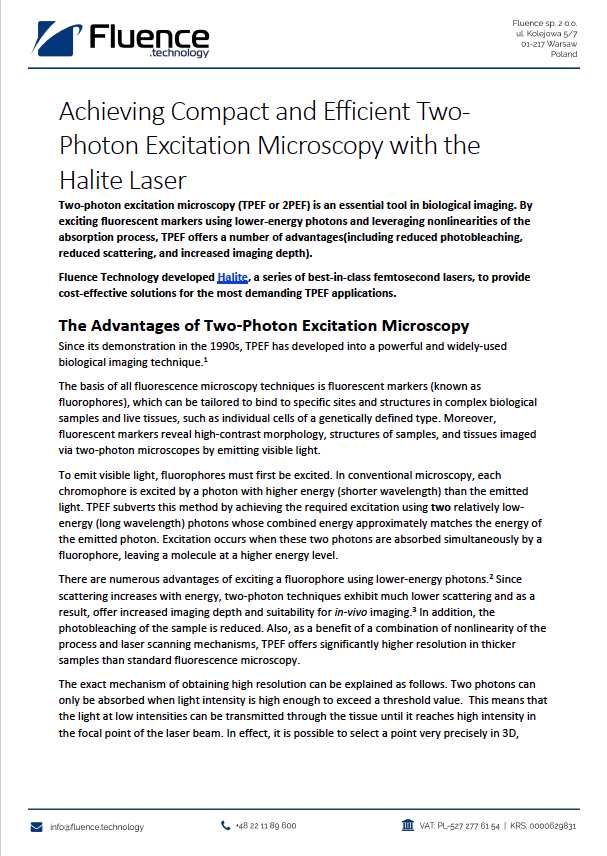
Two-Photon Excited Fluorescence
The Two-Photon Excited Fluorescence is a powerful imaging technique that has rapidly grown over the last years. It enables a huge advantage in biological imaging especially in thick tissues and live cells studies.
The nonlinear dependence of the detected signal with the intensity of excitation makes high-power femtosecond lasers the preferred source for this technique. Using Green Fluorescent Proteins (GFP) further increases the capabilities of TPEF. Different GFPs may be fused to certain proteins inside a cell enabling imaging of complex processes. The excitation occurs in a tight focal volume where a light density is enough for two-photon absorption. Each GFP has its unique absorption profile thus a wavelength-tunable system consisting of OPA pumped by femtosecond laser enables a selective excitation of GFPs in the sample cell. With precise scanning of samples at different focusing planes, 3-D images then may be reconstructed.
The incident femtosecond pulses may be precisely localized within a sample volume, reducing photodamage in the out-of-focus plane. A 1-micron wavelength greatly increases the penetration depth due to a low absorption in the infrared range and imaging of samples up to hundreds of microns (or even thicker) is possible.
Contact us for a FREE QUOTE, or to obtain more info on specific application-related projects.
